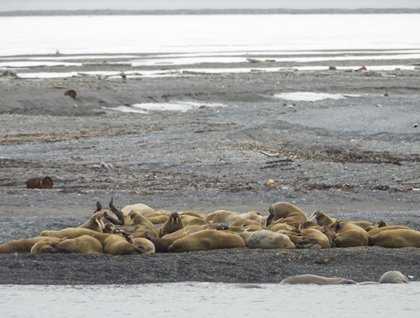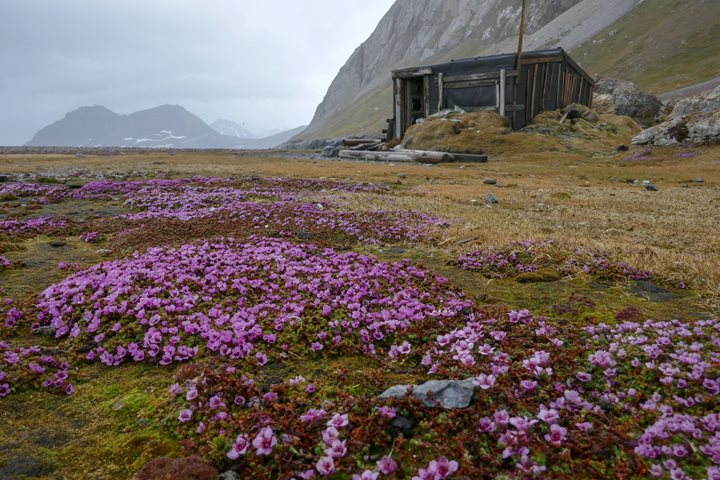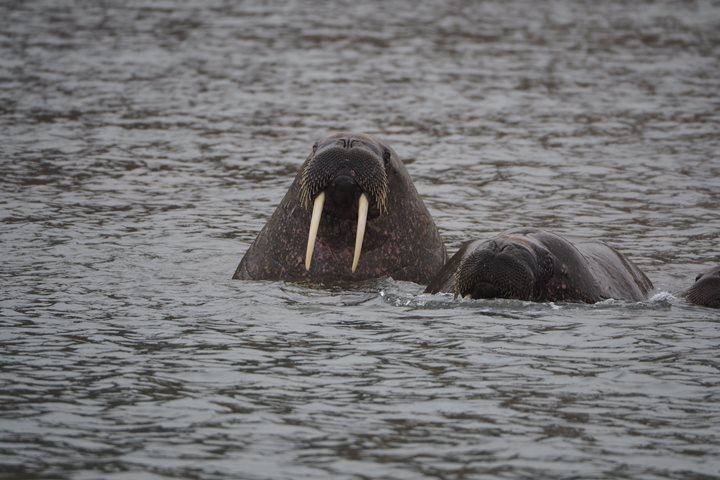The last full day of our expedition in Arctic Norway started earlier than usual; after having had such a wonderful polar bear encounter last night, we all went to bed happy and motivated. Little did we know that we were about to wake up at four in the morning to watch some more wildlife. And that was exactly what we did when our expedition leader announced that there were a lot of walruses outside!
We were at Moffen, a small island north of the mouth of Wijdefjorden that looks more like a glorified sandbar but which is an important haul-out area for walrus and a nesting site for birds. We quickly grabbed our boots, hats and jackets and went outside to see a group of 30 or 40 walruses all piled together on the gravel beach; they are highly gregarious creatures and they love to congregate in highly congested groups with individuals lying on top of each other. We could easily see the long tusks of several large males and the slightly smaller ones of the females, as well as the tiny little tusks of the young walruses that were in the water in front of the main group. Walruses are big animals and one of the largest pinnipeds in the world, with large males weighing up to 4,200lbs; they are frequently seen in Svalbard and we encountered several isolated individuals during the last few days, but at Moffen we had our first opportunity to watch their real social nature.
During the early morning National Geographic Explorer entered Woodfjorden, a 64km-long fjord on the northern coast of Spitsbergen and eventually dropped her anchor at Vulkanhamna, an anchorage on the eastern side of a small fiord named Bockfjorden. There we went ashore to explore the beautiful landscape of tundra surrounded by patches of snow; short, medium, and long hikers admired once again the delicate, subtle beauty of the numerous plants and lichens of the tundra. Some species were very conspicuous like the purple saxifrage, forming beautiful flower carpets, whereas some others required the attention of an observer willing to get onto his or her knees, like the tiny arctic buttercup. We also encountered a few reindeer, including a female with her very young calf. Bird watchers delighted with some very nice sightings of long-tailed ducks and other species.
During the afternoon we started sailing south along the western coast of Spitsbergen towards Longyearbyen; with lots of new memories, friends, and photos, our hearts were full and the magnificent vistas of jagged snowy peaks during captain’s farewell party made for the perfect ending of an incredible journey in the High Arctic.







